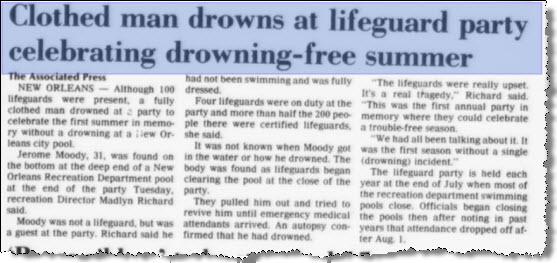Survey on people's perception of death
Over the last week, I tried to find out the view of PennStaters and how they perceive the idea of death. Over my past few blogs, I spoke about different ways people died, different theories for the afterlife, the art in death (gravestones) and the different cultural traditions involved all over the world. It made me curious towards the end to know how people around me view the 'concept' of death.
This survey, conducted using the help of Survey Monkey, had 2 simple questions:
1. List 2 reason why you wouldn't want to die
2. Are you scared of death? (Feel free to explain)
I received 60 responses for this survey, some expected answers, some silly mischief and some sentimental responses.
For the first question, the popular reasons followed the following order:
1. Family & Friends (30 people)
2. Wanting more out of life (13 people)
3. Fear of the Afterlife/Unknown (4)
4. Curious about the future (3)
There were some scattered responses such as food, kids, "waiting for my iPhone X", specific names and the best: memes.
As their second reason, people listed a varied variety of responses, much more interesting then the first one. They followed the following order:
1. Wanting to see the future
2. Wanting to be a parent
3. Fearing the pain involved in dying
4. Love life
5. Love my pets
6. Missing people and moments
Again, there were some random answers, related to personal aspirations, specific names of people, ambitious plans and food
The order of these answers shows how most people thought first about the pain their death would inflict on others, than the pain it would cause themselves. Their first thought/response was about fears and regrets they might have, followed by the fact that they actually like the life they are living and wouldn't want it to end. It was interesting to note how people think first about others; showing how empathetic people can be - Except this one person who gave the following answer:
Over the last week, I tried to find out the view of PennStaters and how they perceive the idea of death. Over my past few blogs, I spoke about different ways people died, different theories for the afterlife, the art in death (gravestones) and the different cultural traditions involved all over the world. It made me curious towards the end to know how people around me view the 'concept' of death.
This survey, conducted using the help of Survey Monkey, had 2 simple questions:
1. List 2 reason why you wouldn't want to die
2. Are you scared of death? (Feel free to explain)
I received 60 responses for this survey, some expected answers, some silly mischief and some sentimental responses.
For the first question, the popular reasons followed the following order:
1. Family & Friends (30 people)
2. Wanting more out of life (13 people)
3. Fear of the Afterlife/Unknown (4)
4. Curious about the future (3)
There were some scattered responses such as food, kids, "waiting for my iPhone X", specific names and the best: memes.
| Quickmeme Images |
1. Wanting to see the future
2. Wanting to be a parent
3. Fearing the pain involved in dying
4. Love life
5. Love my pets
6. Missing people and moments
Again, there were some random answers, related to personal aspirations, specific names of people, ambitious plans and food
 |
| askideas.com . |
The second question was more straightforward; "Are you scared of death?" The participant had to simply choose between a Yes or a No, and could add a comment to explain their answer.
Astonishingly, there was not a big difference in these responses:
It was my initial expectation to find most people fearing death, with a ration of about 7:3. While most people did accept that they feared death, quite a few claimed to not fear it at all.
Most reasons for people to fear death, as I expected, was the fear of what was to follow. They thought it would hurt to die, hurt to leave everything that you have worked for all your life, and to leave all close to you behind.
The reasons most people did not fear death, was due to its inevitability. Most answers looked something like this:
Some students were evidently fooloing around, with a concerning reply as this:
While some students had responses influenced by their religious views, like this one:
I was happy with the results of this survey. Quite a few students participated, and their responses seemed genuine. Most answers were as expected, which shows how much people, even students in their teenage years, are concerned by the uncertainty of afterlife, and the regret of not having done. It is a reminder of the famous saying, "Seize the day!"
With this last blog, if you are reading this, I'd like to remind you to tell yourself this everyday, "Forgive and give as if it were your last opportunity; Love like there's no tomorrow, and if tomorrow comes, love again." - Max Lucado. Then again, don't fear the inevitable, let it motivate you till the very end.
























